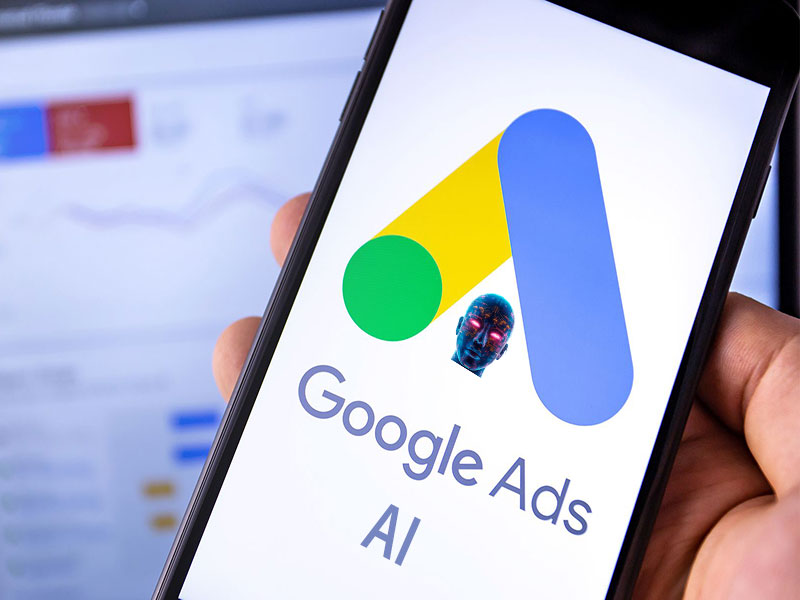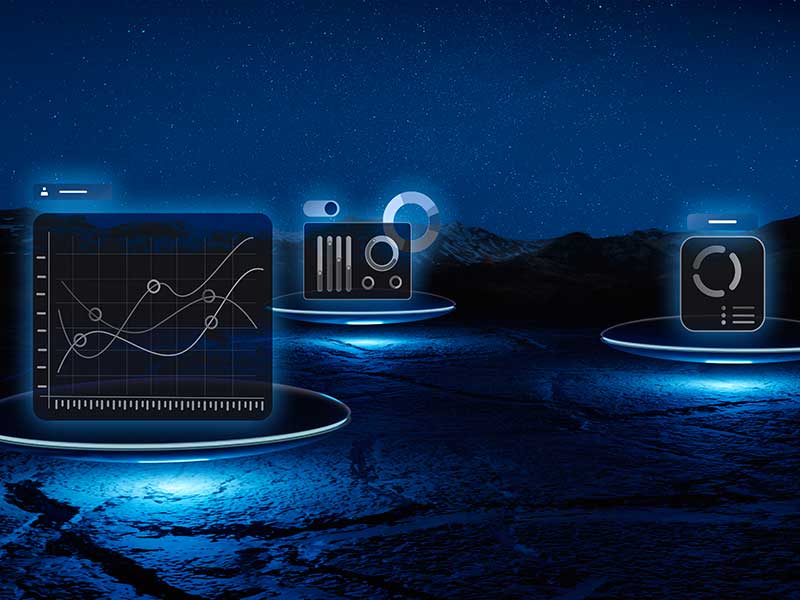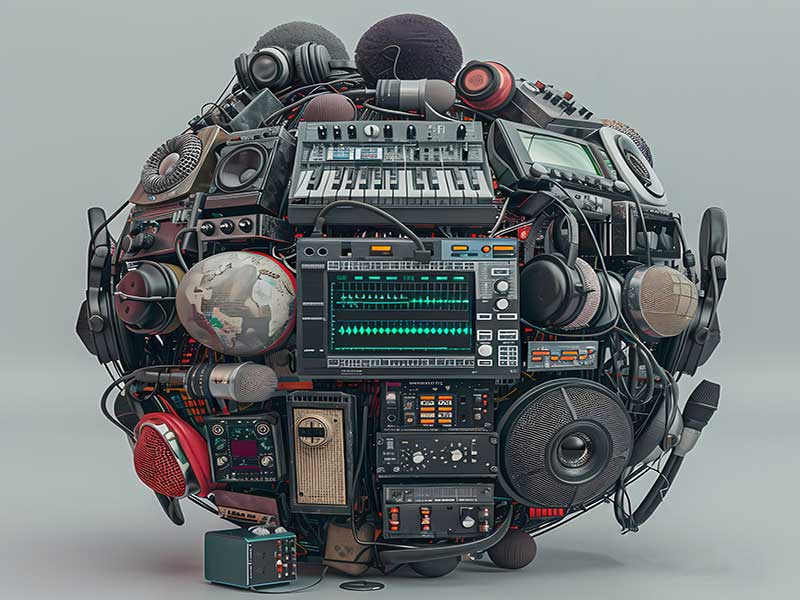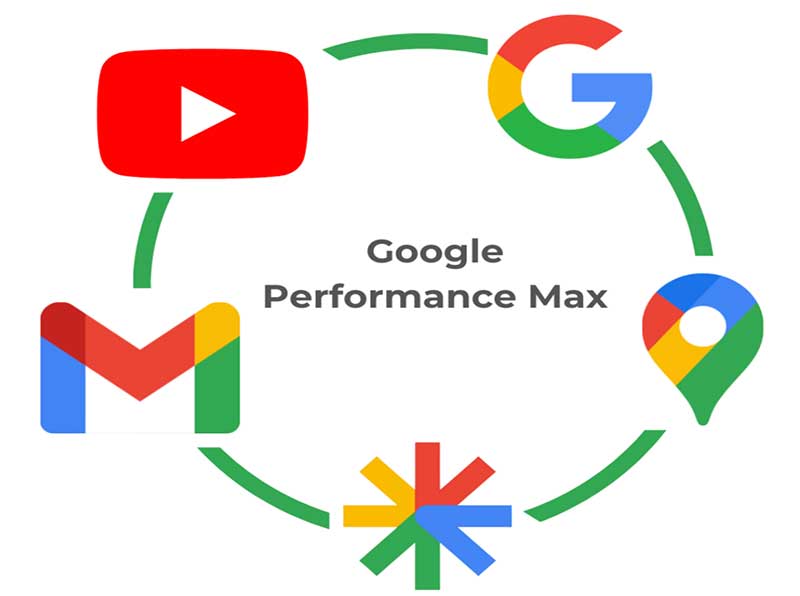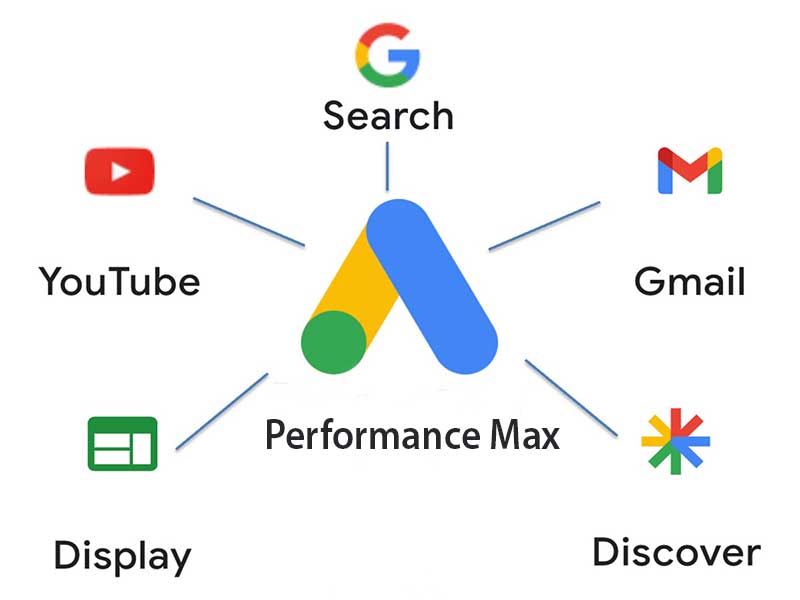As the digital advertising landscape continues to evolve, advancements in Google Ads AI will undoubtedly play a crucial role in shaping the future of online advertising. From enhancing consumer insights to streamlining the ad creation and delivery process, integrating AI technology will transform how advertisers approach their campaigns.
This is the direction that Google is heading, and for companies that align their campaigns to take advantage of these advancements, fantastic case studies will surely emerge.
In this post, we’ll look at how Google Ads is evolving and how you can use these advancements for unprecedented results.
Increased Automation and Algorithm Refinement
One of the most transformative trends in Google Ads for 2025 is the deeper integration of AI and machine learning into ad creation and campaign management. These advancements are reshaping how advertisers approach digital advertising, making data-driven strategies more critical than ever.
AI-powered algorithms now analyze vast amounts of data to create hyper-personalized ad content, predict user behavior, and optimize campaigns in real time. This shift requires advertisers to rethink traditional
campaign structures, focusing on feeding AI systems high-quality data to maximize results. Success will increasingly depend on how well advertisers can guide these systems through strategic input and data curation.
To stay competitive, businesses must embrace AI-driven features like intent-based targeting, automated bidding, and dynamic ad creation. Advertisers who adapt their strategies to leverage these tools will gain a significant edge over those who fail to evolve. In this new era of intent-driven advertising, those unwilling to embrace innovation risk falling behind their more forward-thinking competitors.
By implementing the full potential of Google Ads AI, companies can improve campaign performance, unlock sustainable growth, and stay ahead in the fast-evolving digital marketing landscape.
Improved Full AI-Powered Bidding
The days of manual bidding are quickly fading as Google’s AI-powered bidding solutions set a new standard for campaign performance. Powered by machine learning, automated bidding strategies analyze vast amounts of data—such as user behavior, market trends, and campaign performance metrics—to make real-time bid adjustments that maximize results.
Strategies like Target CPA and Target ROAS allow advertisers to optimize for specific business goals, ensuring that ad spend is directed toward the most
valuable traffic. Advertisers leveraging these tools often see significant improvements in efficiency and ROI. Studies have shown that AI-powered bidding strategies can deliver conversion rate increases of up to 20% compared to traditional manual approaches.
Advertisers must ensure their accounts are properly configured to harness the full power of Google Ads’ Smart Bidding. This includes selecting the appropriate bidding strategy, developing robust conversion tracking, and providing high-quality data inputs. Broad matching keywords can complement Smart Bidding by giving AI more flexibility in identifying high-converting queries for paid searches.
However, exact and phrase-match keywords still play a role in tightly controlled campaigns. Advertisers should test broad match keywords and compare performance. If broad match underperforms, adjustments to campaign structure or conversion tracking may be necessary to unlock its full potential. In 2025, a well-optimized Full-AI build—with minimal bid restrictions—is likely to outperform traditional structures, delivering superior performance in most scenarios.
Advertisers who embrace AI-powered bidding and continuously refine their campaigns will be positioned to drive better results, maximize efficiency, and stay ahead in an increasingly competitive landscape.
Improved Audience Targeting and Segmentation
As AI and machine learning algorithms evolve, Google Ads unlocks powerful new audience targeting and segmentation capabilities. With tools like Custom Segments and Performance Max campaigns, advertisers can analyze vast datasets to uncover actionable insights into consumer behavior, preferences, and intent. This allows for creating highly personalized campaigns that reach the right audience at precisely the right moment.
Moving beyond broad demographics or basic
contextual signals, AI-driven audience modeling pinpoints and engages ideal customers more precisely than ever. To fully capitalize on these advancements, advertisers must focus on providing high-quality first-party data, refining their campaign objectives, and designing strategies that align with AI’s potential.
Advanced audience targeting and dynamic creative optimization go hand in hand, as AI can select the most relevant ad content for each user. Combining these capabilities allows advertisers to serve personalized messaging that resonates, driving higher engagement and conversion rates.
Building campaigns to be fully AI-enabled is the key to unlocking these benefits. This involves using highly themed ad groups, broad match keywords, and responsive search ads, which give AI the flexibility to optimize targeting, bids, and creatives in real-time. Advertisers who embrace these techniques and integrate AI deeply into their campaign strategies will drive superior results, including higher conversion rates, improved efficiency, and an unmatched return on investment.
Predictive Analytics and Forecasting
Another exciting advancement in Google Ads AI is the growing use of predictive analytics and forecasting. By analyzing vast troves of user behavior data, AI systems can now anticipate consumer intent, preferences, and purchase patterns with remarkable accuracy. This allows advertisers to get ahead of the curve, serving the right ads to the right people at the optimal time.
Predictive features like audience forecasting, bid optimization, and budget planning empower advertisers to make smarter, more strategic decisions.
AI-powered forecasting can predict expected performance, allowing marketers to plan campaigns, allocate budgets, and set realistic goals.
Ads managers can use predictive analytics by fully embracing automated bidding strategies, audience-based targeting, and AI-generated ad content. The more an advertiser relies on these AI-driven capabilities, the better the algorithms can anticipate future outcomes and adjust to drive continued performance improvements.
Advertisers must develop a robust data infrastructure to take full advantage of forecasting and predictive analytics, clean and organize their information, and train AI models on high-quality historical data. With the correct data and AI integration, advertisers can gain unprecedented visibility into future trends, positioning their Google Ads campaigns for long-term success.
Optimization for Mobile-First Experiences
In 2025, the dominance of mobile devices will continue to shape the evolution of Google Ads. AI will be pivotal in optimizing ad experiences for on-the-go consumers, ensuring seamless, mobile-first interactions that capture attention and drive results.
AI-powered features like responsive search ads, dynamic display ads, and automated bidding strategies are essential for delivering mobile-optimized experiences. These tools analyze user behavior, device context, and conversion data in real-time, enabling
visually engaging, relevant, and perfectly timed ads for mobile users.
Advertisers must prioritize creating ad content designed specifically for smaller screens and micro-moments to succeed in this mobile-first landscape. AI-generated ad copy, images, and videos will be critical for crafting compelling, high-performing campaigns tailored to mobile consumers’ fast-paced behavior.
Advertisers who embrace mobile-first optimization and effectively leverage AI tools will capture consumer attention, achieve higher engagement, and outperform competitors that are still anchored to desktop-centric strategies.
Integration with eCommerce Platforms
The explosive growth of eCommerce is driving even deeper integration of AI into Google Ads, enabling a seamless connection between ad engagement and conversions. AI bridges this gap by creating highly personalized, end-to-end shopping experiences that drive measurable results.
Tools like Google’s Performance Max and AI Shopping campaigns transform how advertisers approach eCommerce. These AI-powered solutions analyze real-time signals—such as product preferences, browsing
behavior, and purchase history—to deliver tailored ads that align with individual customer needs. For example, Performance Max can dynamically adjust targeting and bidding strategies to showcase the right products to the right audiences at the perfect time.
Integrating Google Ads with eCommerce platforms gives AI a holistic view of the customer journey, from the first ad click to the final purchase. This rich data integration empowers AI to optimize every aspect of campaign performance, including audience targeting, creative selection, and bid adjustments, resulting in increased conversion rates, higher average order values, and greater ROI.
Advertisers who fully embrace these AI-driven integrations gain a significant competitive advantage. By delivering a seamless shopping experience and making data-driven decisions, they can capture more customers, build lasting brand loyalty, and stay ahead in a rapidly evolving digital marketplace.
Accountability and Transparency Measures
As AI becomes integral to Google Ads, accountability and transparency will take center stage to ensure these powerful technologies’ ethical and responsible use. These measures are essential for building trust with consumers and safeguarding the integrity of advertising practices.
Advertisers and platform providers must implement robust safeguards to address algorithmic bias, data privacy, and transparency. This includes obtaining explicit consent for using personal data, providing clear
and accessible explanations of how AI models make decisions, and using oversight mechanisms to monitor for unintended consequences. For example, Google Ads already provides transparency features like ad disclosures and AI-powered insights, helping advertisers and consumers understand how campaigns operate.
Regulatory bodies are also likely to introduce new guidelines to govern AI in advertising, prompting the industry to adopt best practices and self-regulate proactively. Staying ahead of these regulations by implementing responsible AI strategies will ensure compliance and demonstrate a commitment to ethical advertising.
Advertisers prioritizing transparency by clearly communicating data usage and leveraging tools to eliminate bias will build stronger consumer trust. By taking the lead on accountability, they position themselves as industry pioneers, driving brand loyalty and long-term success.
Expanded Reporting and Analytics
As AI becomes a core component of Google Ads, reporting and analytics capabilities are evolving to provide advertisers with deeper, more actionable insights for campaign optimization. These advancements are reshaping how advertisers understand performance and make data-driven decisions.
AI-powered analytics are moving beyond traditional metrics like impressions, clicks, and conversions. Advertisers can now access advanced predictive models that forecast campaign performance, highlight
emerging market trends, and uncover untapped growth opportunities. For instance, tools like Performance Planner and Auction Insights can analyze historical data, real-time signals, and seasonal trends to predict consumer demand and recommend proactive adjustments to bidding strategies and ad placements.
AI also simplifies complex data by transforming it into intuitive visualizations and smart recommendations tailored to each advertiser’s specific goals. Features like the Insights Page in Google Ads surface actionable trends, such as shifts in search behavior or rising audience segments, empowering advertisers to react quickly and allocate budgets more effectively.
By embracing these AI-enhanced reporting tools, advertisers can uncover opportunities previously hidden in raw data, make smarter, faster decisions, and stay ahead of their competition. Those who leverage these expanded analytics will improve campaign performance and solidify their position as leaders in an increasingly data-driven advertising landscape.
Innovations in Creative Ad Generation
Google Ads is taking creative ad generation to new heights with the integration of generative AI tools that streamline the creation of high-quality image assets. These advancements are transforming how advertisers produce visuals, enabling them to craft personalized and engaging content more efficiently than ever before.
Advertisers can now generate images directly within Google Ads by using free-form text prompts, allowing for the rapid creation of visuals tailored to their specific campaign needs. For instance, an advertiser can
describe the type of imagery they require—such as “a vibrant product shot with a clean background”—and AI will produce visuals that align with the request. This functionality eliminates the need for extensive manual design work while maintaining creative flexibility.
In addition to image generation, Google Ads offers dynamic visual optimization features, such as resizing and reformatting images to fit various placements across its ecosystem. Combined with AI-powered tools like Responsive Search Ads and Performance Max campaigns, advertisers can seamlessly integrate these visuals into campaigns, ensuring consistency and maximizing engagement across channels.
To make the most of these creative advancements, advertisers should:
-
Leverage generative AI tools to quickly produce high-quality, on-brand visuals for campaigns.
-
Refine text prompts to ensure that AI-generated images meet their specific creative and messaging goals.
-
Incorporate generated visuals into dynamic ad formats, like Responsive Display Ads, for broad compatibility across devices and platforms.
As generative AI technologies evolve, advertisers who embrace these tools will be better positioned to deliver personalized, visually compelling campaigns that resonate with their audiences and drive stronger results. By streamlining creative production and harnessing the full potential of AI, brands can focus on strategy and storytelling, ensuring a competitive edge in the digital advertising landscape.
Multimodal Ad Experiences
The convergence of AI, machine learning, and emerging technologies is driving a new era of multimodal ad experiences, allowing advertisers to connect with consumers across a variety of digital touchpoints. Google Ads is evolving to deliver seamless integration across platforms, devices, and formats, ensuring a cohesive brand presence that resonates with today’s fragmented audiences.
Current AI-powered tools, such as Performance Max, enable advertisers to run campaigns across Google’s
ecosystem—from YouTube and Display to Search and Maps—while maintaining consistent messaging and optimizing performance. These tools dynamically adjust targeting, bidding, and creative elements to deliver ads that align with user preferences and behavior.
Looking ahead, innovations like voice assistant integrations and interactive technologies such as augmented reality (AR) and virtual reality (VR) hold exciting potential for advertisers. These advancements could offer opportunities to create personalized, immersive ad experiences, such as interactive product demonstrations or branded virtual environments. While not yet fully realized, these technologies are rapidly evolving and could play a transformative role in future campaigns.
To succeed in today’s multimodal landscape, advertisers should:
-
Create versatile ad assets: Design creative elements that perform well across multiple formats and platforms.
-
Leverage Google’s AI tools: Use solutions like cross-channel attribution and audience insights to understand consumer behavior better and refine strategies.
-
Prioritize consistency: Ensure messaging aligns across channels to provide a unified and engaging brand experience.
Advertisers who embrace these strategies and fully utilize Google Ads’ AI-powered tools will stand out in a crowded digital environment. By delivering seamless, personalized experiences, they can capture consumer attention, drive engagement, and foster stronger brand loyalty.
Advancements in Video and Audio Ads
As video and audio content increasingly dominate consumer attention, Google Ads is leading the way with advancements in these immersive ad formats powered by AI and machine learning. These innovations are reshaping how advertisers connect with audiences through dynamic, personalized, and impactful campaigns.
On the video front, AI tools like YouTube Video Action campaigns enable advertisers to create tailored, engaging content that resonates with individual
viewers. Google Ads can dynamically optimize elements like text overlays, calls to action, and product placements by analyzing user behavior, contextual cues, and creative assets. As AI technology advances, we may soon see tools capable of automatically adjusting voiceovers, music, and visuals to better align with audience preferences and campaign goals.
In the audio domain, Google Ads is leveraging AI to develop conversational, contextually relevant ads for platforms like YouTube and Google Podcasts. These tools analyze user intent, listening behavior, and sentiment to deliver ads that feel seamless in the user experience. For example, an AI-driven audio ad could recommend a product or service that aligns with the listener’s mood or activity.
AI is also enhancing video and audio ads’ targeting and measurement capabilities. Advertisers can now reach the right audiences with greater precision through tools like audience segmentation and cross-channel attribution, while advanced reporting provides deeper insights into campaign performance and ROI.
Advertisers should focus on creating modular, flexible, creative assets that AI can adapt across formats and channels to capitalize on these advancements. By embracing these AI-driven innovations, brands can deliver personalized ad experiences that capture attention and drive engagement, conversions, and long-term loyalty.
Leveraging User Intent Data
The advancement of AI in Google Ads is transforming how advertisers leverage user intent data to optimize campaigns and drive results.
AI-powered tools like Smart Bidding already analyze a wide range of contextual signals—such as search queries, browsing behavior, and device usage—to anticipate user intent and deliver ads that align with consumers’ needs. As these capabilities evolve, advertisers will gain even deeper insights into the buyer’s journey, enabling them to serve highly
targeted, personalized ads that resonate at every stage of decision-making.
For instance, Google Ads can detect when users shift from general research to active product consideration. By harnessing this intent data, advertisers can adjust bidding strategies, refine audience targeting, and dynamically tailor ad creatives to deliver compelling offers that drive conversions and maximize ROI.
As AI and machine learning advance, new opportunities will emerge to uncover untapped signals, such as contextual behaviors or nuanced patterns in consumer decision-making. By building campaigns that fully utilize Google’s AI systems, advertisers can stay ahead of the curve, delivering personalized ad experiences that capture attention, inspire action, and foster long-term brand loyalty.
Seamless Omnichannel Advertising
Building on the advancements in multimodal ad experiences and user intent data, Google Ads is poised to deliver seamless, omnichannel advertising capabilities powered by AI. As emerging technologies like 5G and the Internet of Things expand the digital landscape, consumers will interact with brands across an ever-growing array of touchpoints.
Advertisers must leverage AI to orchestrate cohesive, cross-channel campaigns that deliver a consistent, personalized brand experience to thrive in this fragmented environment.
Your content goes here. Edit or remove this text inline or in the module Content settings. You can also style every aspect of this content in the module Design settings and even apply custom CSS to this text in the module Advanced settings.
AI-driven tools like Performance Max and Discovery ads enable advertisers to reach consumers across Google’s ecosystem, ensuring unified messaging and optimized performance. As these capabilities evolve, we may see AI systems that can dynamically adjust ad content, bidding, and targeting strategies in real time, responding to consumer behavior and intent across multiple channels.
Advertisers should focus on developing versatile creative assets and investing in robust data infrastructures to maximize the impact of these omnichannel strategies. By harnessing the power of AI, brands can captivate audiences, drive engagement and conversions, and build long-lasting relationships with their customers.
Performax Max Campaign Advancements
One of the most significant advancements in Google Ads is the continued evolution of Performance Max, Google’s latest AI-powered campaign type. This innovative campaign type empowers advertisers to reach consumers across Google’s entire ecosystem, including Search, Display, YouTube, Discovery, and more.
Performance Max campaigns leverage AI and machine learning to analyze vast amounts of data, uncover insights, and dynamically optimize ad delivery for maximum performance.
As Performance Max matures, we can expect to see several key advancements:
-
Improved Audience Targeting: AI-driven tools will become increasingly sophisticated in identifying and reaching the most valuable audience segments, leveraging signals like browsing behavior, purchase intent, and demographic data.
-
Smarter Automation: Performance Max will continue to refine its automated bidding, ad creative, and budget allocation strategies, ensuring optimal performance across all channels.
-
Expanded Multimodal Capabilities: Building on the advancements in ad formats and user intent, Performance Max will enable seamless integration of text, visuals, audio, and even interactive elements to deliver highly engaging, personalized ad experiences.
By embracing the power of Performance Max, advertisers can streamline their campaign management, reduce operational overhead, and achieve greater returns on their advertising investments.
Paid Search and Performance Max Working Together
Performance Max and paid search campaigns can work together synergistically, complementing each other’s strengths to provide comprehensive advertising coverage and drive superior results. By combining the precision of paid search with the broad reach and automation of Performance Max, advertisers can optimize ad performance at every stage of the customer journey.
Paid search campaigns excel at capturing high-intent traffic by targeting specific keywords, testing ad copy,
How Paid Search and Performance Max Complement Each Other:
1. Reach and Coverage
-
- Paid Search: Focuses on users actively searching for specific terms, making it ideal for capturing demand at its peak.
- Performance Max: Broadens reach by targeting audiences based on interests, behaviors, and intent signals, even if they’re not actively searching. This ensures advertisers connect with both high-intent users and those in earlier stages of the buying journey.
2. Automation and Efficiency
-
- Paid Search: Offers granular control over keywords, bidding, and audience targeting, which is valuable for precise, objective-driven campaigns.
- Performance Max: Leverages AI to automate bidding, targeting, and creative optimization across channels, streamlining campaign management and maximizing efficiency.
3. Targeting and Personalization
-
- Paid Search: Uses search queries to target users directly based on their intent.
- Performance Max: Incorporates a wider array of signals, including audience segments, website activity, and browsing behavior, to deliver highly personalized and engaging ad experiences.
4. Conversion Optimization
-
- Paid Search: Focuses on converting users with high intent who are actively searching for products or services.
- Performance Max: Captures additional conversions by targeting users across multiple touchpoints and stages of the customer journey, helping advertisers expand their total conversion volume.
5. Testing and Learning
-
- Paid Search: Enables A/B testing of ad copy, keywords, and landing pages to identify what resonates most with target audiences.
- Performance Max: Allows for experimentation with audience segments, creative assets, and channel strategies, uncovering new opportunities to refine performance.
Strategic Benefits of Integration:
By aligning paid search and Performance Max campaigns, advertisers can create a well-rounded, data-driven strategy that maximizes impact. Paid search provides precision and actionable insights, while Performance Max drives automation, scalability, and reach. Together, these approaches enable advertisers to:
-
- Optimize ad spend by targeting both active and passive audiences.
- Gain deeper insights into customer behavior across platforms.
- Boost conversions and ROI with a holistic, omnichannel approach.
The strategic integration of paid search and Performance Max is a game-changer for advertisers. By leveraging the unique strengths of both campaign types, businesses can enhance efficiency, drive sustained growth, and stay ahead in a competitive digital landscape. Combining these two approaches is the key to unlocking the full potential of Google Ads, creating a seamless customer journey that delivers measurable results.
Conclusion
The future of Google Ads is undeniably intertwined with AI-driven advancements. Advertisers who embrace these tools will unlock unprecedented opportunities to connect with their target audiences, personalize ad experiences, and optimize campaigns across all channels.
As digital marketing continues to evolve, now is the time to adapt your Google Ads strategy to fully harness the potential of AI, positioning your business for long-term success.

